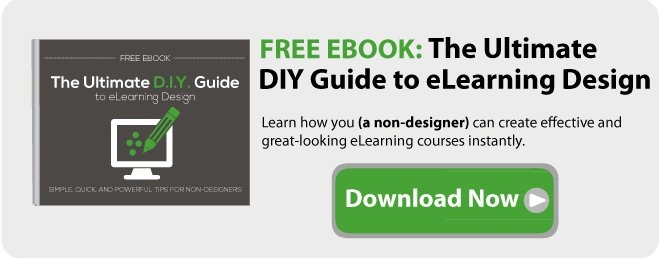Effective learning doesn’t require expensive technology and elaborated training sessions. It doesn’t even demand the impossible from you, the course developer. But it does call for a change in mindset.
Such change begins once you understand how the human brain really works. Only then can you realize your role as a Creator of Learning.

What You See vs. What Your Brain Gets
What you see is not exactly what your brain gets. You see through a lens. So learners may be seeing something different from what you want them to see. Their background, knowledge, familiarity with the subject, and expectations serve as lenses that filter what they see.
The good news is, you can also influence people to see things in a certain way, depending on how they are presented.
Learning is About Making Connections
Learning is a process based on associations. Cognitive scientists have shown that it’s all about connecting the dots and combining new patterns. Learners organize, store and retrieve information. And they relate old ones to new ones. Moreover, studies reveal that "creating associations between concepts can increase our ability to remember details by as much as 40%." All this explains why prior knowledge is crucial to the learning process.
As a course developer, you can help learners access their previous knowledge and use it to draw new conclusions or patterns or combinations. Help them locate salient points, help them understand information (not just consume it) and use it more flexibly. If learners can connect new information to information they already have stored, then it will be easier for content to stick.
Order Matters Too
The sequence of subjects or studies students learn is crucial to how they process, store and recall information. Students who learn in the wrong order will end up recalling very little or not learn at all.
Our brains also like hierarchy. Following this principle, you can design your screens starting with general and important concepts and then moving to, “explaining information in a hierarchical fashion.” John Medina says, “You have to do the general idea first. And then you will see a 40% increase in understanding.”
Learning is Dependent on Context
You know by now that context is as powerful as content, if not more powerful. It shapes the way people learn. That’s because context prescribes how and where the learning occurs, what surrounds the learner and even who is with the learner.
A classroom with a high-handed teacher and a handful of active learners is considered a context, albeit not a very effective one. Studies have also shown that highly context-dependent learning doesn’t stick well over the years, mainly because it becomes difficult to recall when that context changes. What works well is when students are exposed to information in different contexts.
People Can Hold Attention for Up to 10 Minutes
Learners who are interested in a topic or subject can pay attention to it for about 7–10 minutes, and then their attention starts to wane. If they’re not interested, they will lose interest much sooner.
John Medina says in his book Brain Rules: "If something is not done in the 10th minute, you will lose your audience. Since they are not paying attention any more, they will not remember anything you say..."
Learning is an Active Process
People learn more effectively if they are active rather than passive during the learning process. Truth is students don't absorb knowledge like a sponge absorbs water. eLearning professionals can't assume that people remember content just because they took a course once.
Keeping learners in an active mode is crucial. By actively participating, students are able to experience for themselves the process of learning. They are able to use relevant information and theories to solve a problem—or learn by doing. They are able to react and respond appropriately to information and thus process it actively.
Motivation Fuels Learning
Motivation determines and sustains learning. Recent studies even say motivation matters more than IQ or learning styles for learning new skills. But what, exactly, motivates students to learn? There are a number of factors and chief among them are
- Greater autonomy or freedom students have in directing how, what and when they learn
- The positive value, personal reward or professional incentive students find in a learning activity
- Perceived support from the learning environment
Images Are a Powerful Gatweay to Learning
Studies of memory and brain processes, in fact, show that images are more powerful compared with words—at least in terms of memorization.
It turns out that people are much more efficient at memorizing and learning a visual information. They can, impressively, retain 90% of an image or visual information for a few days even when exposed only for a few short seconds.
This is backed up by the Picture Superiority Effect, which states that humans learn better when information is presented as pictures than when the same information is presented in words.
Recommended resources:
Brain Rules Mindmap: Check out this awesome summary from the book. You'll quickly learn the basics (and very graphically)
Brain Rules for Presenters (Slideshare): This is a great demonstration of how to do a brain-friendly, learning-maximised presentation or eLearning course!




